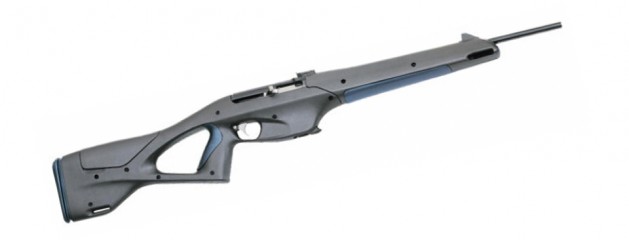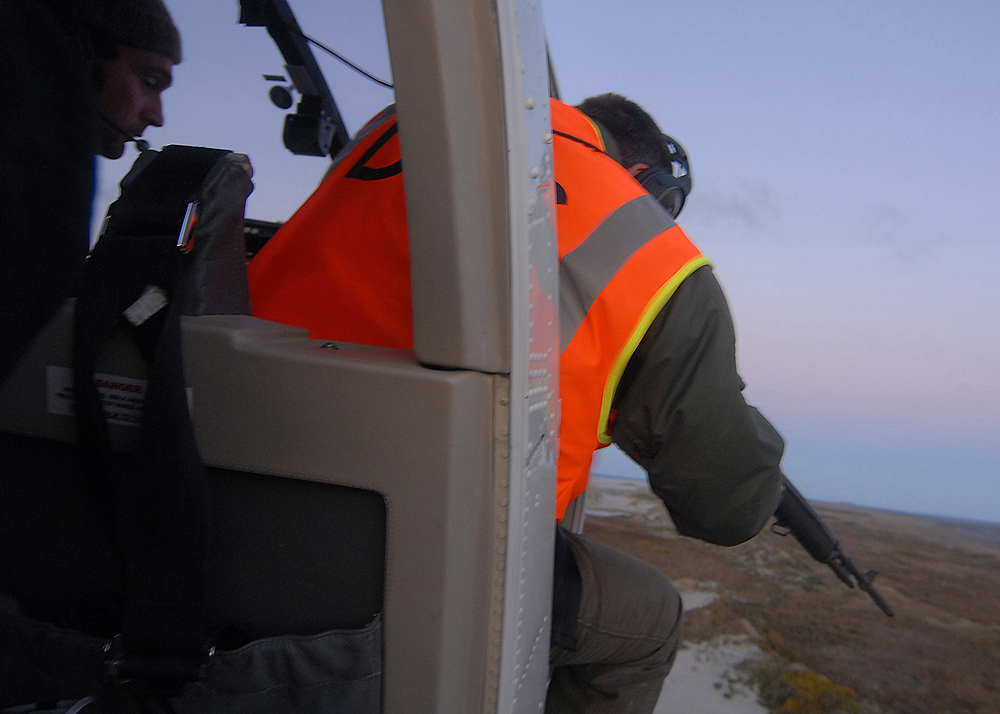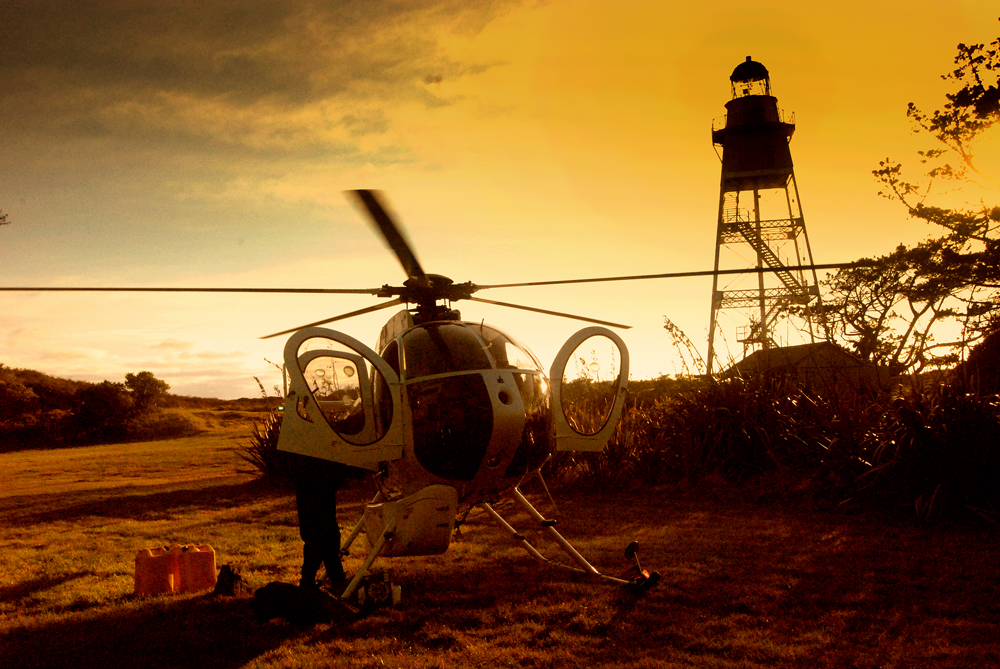I am really excited to have my own sub-forum
We've got a few cool products under evaluation, and more in the pipeline.
New rifle!
I scored myself a Baikal MP 161k, which I'm hoping to review once I've had the barrel shortened and threaded for a suppressor. I'm hoping this will be a good NV varmint killer because it is fitted with a picatinny rail and has an adjustable cheek piece, and a cocked indicator than I can feel underneath by the trigger guard. Best of all, it only cost $550, with 2x 9 round mags. It loks quite horney, and I am hoping that it is accurate enough to do the job. I plan to be trialling this with a variety of scopes, including our new Pulsar Apex thermal. There are growing numbers of rabbits in the Richmond (Nelson), region, so hope to get some good video footage. I only received this rifle today, so will be stripping (the rifle!), cleaning, lubricating with moly grease, and inspecting.
DOC pig ertradication programme.
I have been involved in removing pigs on Farewell Spit. What a hoot. Farewell Spit is a World Heritage site, and home to many rare nesting species. The Spit is covered with chest high scrub and gorse, that the pigs hide in. I sit in the back of the chopper, and spot, then guide the pilot to drive the pigs into clearings, where the shooter (Motueka's Coxy, shoots with his Norinco M14 replica .308. Vary effective.
I have used a Pulsar Quantum HD19s and Pulsar Quantum 38s 30Hz thermal imagers to spot and take videos.
Take a look at the vids:
Shooting pigs from a helicopter in New Zealand 2. Spotting with a Pulsar Quantum HD19s Thermal Imager. on Vimeo
https://vimeo.com/104784720
Next trip I will be trialling the Pulsar Quantum HD50s thermal imager.
Here is the press release:
Media release
7 October 2014
Farewell to pigs on the spit
The Department of Conservation (DOC) has commenced a ground and aerial hunting program to eradicate wild pigs from Farewell Spit. The program aims to protect the many rare and threatened species inhabiting the spit, which include plants, birds and the katipo spider.
Farewell Spit is New Zealand’s longest sand spit, a 25-kilometre long nature reserve. It is an internationally renowned bird sanctuary and is particularly important for migratory seabirds.
More than 300 pigs have been removed to date. The wild pigs root up bird nests and large areas of ground, destroying habitat for native species. Last gannet breeding season pigs were venturing out to the gannet colony and killing about 15 gannets per night. They have also been seen eating shellfish as far as 1km out onto the wet sand.
The thought that the pigs would provide good eating was quickly dismissed with the meat smelling strongly of whale which the pigs scavenge following strandings.
Ian Cox, DOC Biodiversity Ranger, says that DOC would love to eradicate the pigs from the spit completely.
“The increase in vegetation and birdlife since 1975 is encouraging, but until the pigs are removed from the spit, we’re not really going to get effective lasting regeneration and ground nesting birds will continue to be lost.”
“Sows can have up to 10 piglets at a time, so it doesn’t take long to build the numbers up again if any are left behind. Using thermal imaging equipment allows us to see pigs that are hiding in the bush and would not otherwise be found.”
The ground operation involves DOC hunters tramping the spit with their dogs for 3-4 days at a time, shooting the pigs that they find on foot. This is followed up by helicopter operations at dawn and dusk. Reid helicopters will be flying the spit, with Anthony Corke of Yukon Optics spotting the pigs with the aid of thermal imaging equipment and Ian Cox of DOC on the trigger.
There are also pig traps at both ends of the spit, with a camera in place to help monitor whether any pigs are left.
I am particularly pleased with the shooter pic as I had to hold the camera at arms length in a moving helicopter.
More to come.......
Ant
Welcome guest, is this your first visit? Create Account now to join.
Welcome to the NZ Hunting and Shooting Forums.
Search Forums
User Tag List
+ Reply to Thread
Results 1 to 7 of 7
Thread: Howdy shooters!
-
28-10-2014, 09:16 PM #1Member

- Join Date
- Mar 2012
- Location
- Nationwide and South Pacific
- Posts
- 264
Howdy shooters!
-
-
28-10-2014, 09:33 PM #2
Cool looking gun.
Also looks like a spot KiwiGreg should set up with his big 375 and slay them from a mile away
-
28-10-2014, 09:49 PM #3Member

- Join Date
- Mar 2012
- Location
- Nationwide and South Pacific
- Posts
- 264
Pity they don't make a similar rifle in 7.62x39.
-
29-10-2014, 06:25 AM #4OPCz


- Join Date
- Jun 2012
- Location
- Nor West of Auckland on the true right of the Kaipara River
- Posts
- 34,685
Good video. Interesting to see.
It takes 43 muscle's to frown and 17 to smile, but only 3 for proper trigger pull.
What more do we need? If we are above ground and breathing the rest is up to us!
Rule 1: Treat every firearm as loaded
Rule 2: Always point firearms in a safe direction
Rule 3: Load a firearm only when ready to fire
Rule 4: Identify your target beyond all doubt
Rule 5: Check your firing zone
Rule 6: Store firearms and ammunition safely
Rule 7: Avoid alcohol and drugs when handling firearms
-
29-10-2014, 07:23 AM #5
so , im not a pig lover by any means , and im just wondering the 2nd pig , was hit in the butt , was there a follow up shot to finish ? .... as I said , not complaining , just interested , I would love to shoot from a chopper , everytime those pigs stopped , I was thinking shoot it , shoot it , shoot it , ..... SHOOT IT!!!!!! ........good vid , thanks for posting
NO MATTER HOW MUCH IT HURTS, HOW DARK IT GETS OR HOW FAR YOU FALL , .....
YOU ARE NEVER OUT OF THE FIGHT . (Marcus Luttrell)
-
29-10-2014, 07:55 AM #6Member

- Join Date
- Mar 2012
- Location
- Nationwide and South Pacific
- Posts
- 264
Yeh, the pigs get finished off, but as soon as one is hit I immediately look for others, especially ones that may be breaking back under the chopper. I've had a few comments about the bumshot pigs in both vids, and should have probably omitted them in the absence of recording the follow up shot.
I know what you mean by the shoot it, shoot it. Pity the shooter can't see them. That will change when Coxy gets to use our Pulsar Apex thermal riflescope. It will be far easier to nail them when they are hiding.
Helicopter shooting is very productive, though a bit industrial. Good for pest control. We got into some goats near to Castle Rock Hut in the Kahurangi on the way back. It would be a bloody long walk to shoot some goats.
-
29-10-2014, 08:56 AM #7Member

- Join Date
- Mar 2012
- Location
- Nationwide and South Pacific
- Posts
- 264
I need to give full praise to Toby of Reid Helicopters in Wakefield. Top bloke and great pilot. It is a real honour to be involved with these guys. I'll be really sad when this op is over.
 I don't get paid for this, I do it for fun, the feeds, and the piss. Oh, and also for marketing purposes (waste of time trying to sell equipment if I don't use it myself). It is really cool staying at the old lighthouse homestead. I'm almost tempted to smuggle some pregnant sows back on to the Spit
I don't get paid for this, I do it for fun, the feeds, and the piss. Oh, and also for marketing purposes (waste of time trying to sell equipment if I don't use it myself). It is really cool staying at the old lighthouse homestead. I'm almost tempted to smuggle some pregnant sows back on to the Spit 
If you guys are looking for a good chopper company, phone Toby Reid. He'll put you on to some critters.
Similar Threads
-
Howdy from Kaikoura
By hwilds in forum IntroductionsReplies: 10Last Post: 08-04-2013, 09:01 AM -
Howdy..!!
By Martz in forum IntroductionsReplies: 17Last Post: 15-02-2013, 08:50 AM -
Hunters, Target shooters, varmint Shooters? POLL for interest
By Brennos in forum ShootingReplies: 21Last Post: 20-05-2012, 12:24 AM -
Howdy y'all
By Cowboy in forum IntroductionsReplies: 15Last Post: 21-01-2012, 09:14 PM -
Howdy guys.
By ynot351 in forum IntroductionsReplies: 3Last Post: 14-12-2011, 10:18 PM
Tags for this Thread
Welcome to NZ Hunting and Shooting Forums! We see you're new here, or arn't logged in. Create an account, and Login for full access including our FREE BUY and SELL section Register NOW!!





 7Likes
7Likes
 LinkBack URL
LinkBack URL About LinkBacks
About LinkBacks







 Reply With Quote
Reply With Quote


Bookmarks